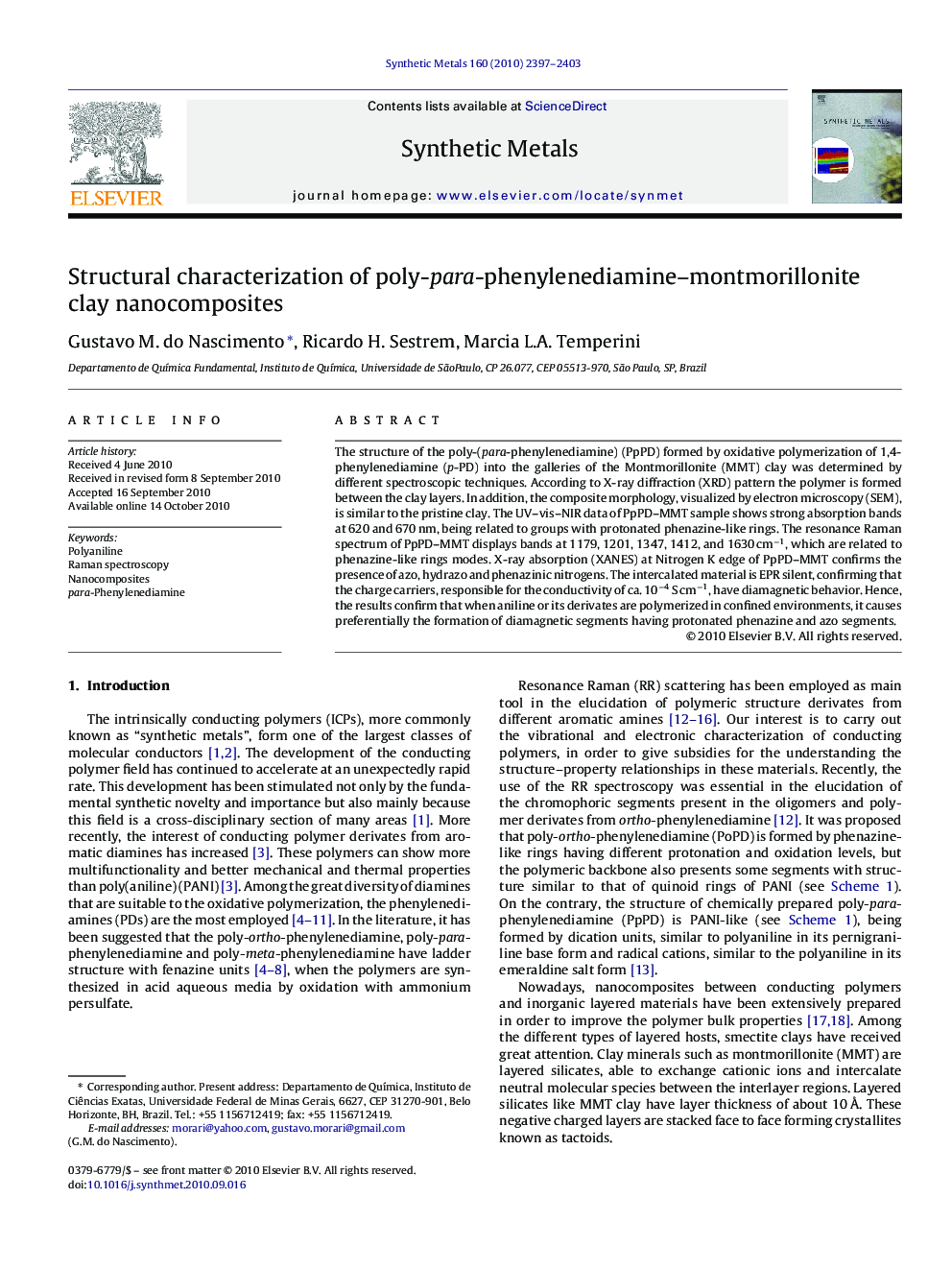| Article ID | Journal | Published Year | Pages | File Type |
|---|---|---|---|---|
| 1441565 | Synthetic Metals | 2010 | 7 Pages |
The structure of the poly-(para-phenylenediamine) (PpPD) formed by oxidative polymerization of 1,4-phenylenediamine (p-PD) into the galleries of the Montmorillonite (MMT) clay was determined by different spectroscopic techniques. According to X-ray diffraction (XRD) pattern the polymer is formed between the clay layers. In addition, the composite morphology, visualized by electron microscopy (SEM), is similar to the pristine clay. The UV–vis–NIR data of PpPD–MMT sample shows strong absorption bands at 620 and 670 nm, being related to groups with protonated phenazine-like rings. The resonance Raman spectrum of PpPD–MMT displays bands at 1179, 1201, 1347, 1412, and 1630 cm−1, which are related to phenazine-like rings modes. X-ray absorption (XANES) at Nitrogen K edge of PpPD–MMT confirms the presence of azo, hydrazo and phenazinic nitrogens. The intercalated material is EPR silent, confirming that the charge carriers, responsible for the conductivity of ca. 10−4 S cm−1, have diamagnetic behavior. Hence, the results confirm that when aniline or its derivates are polymerized in confined environments, it causes preferentially the formation of diamagnetic segments having protonated phenazine and azo segments.
